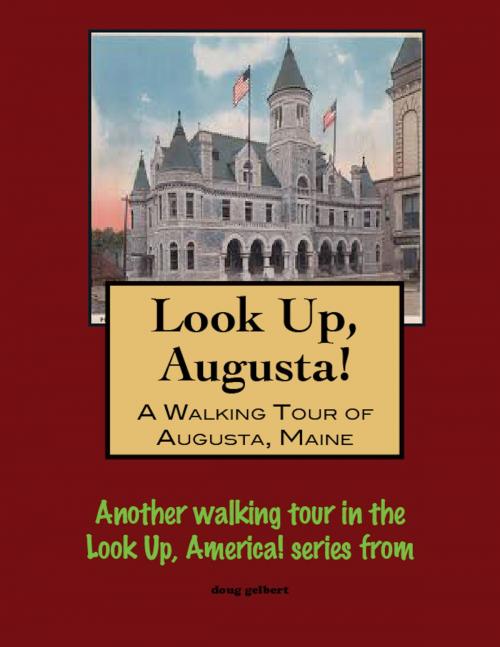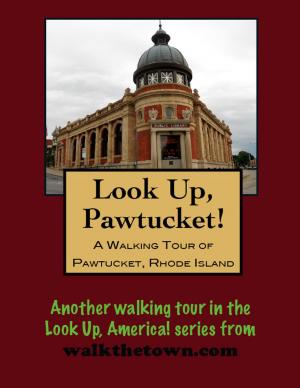| Author: | Doug Gelbert | ISBN: | 9781301457281 |
| Publisher: | Doug Gelbert | Publication: | March 25, 2013 |
| Imprint: | Smashwords Edition | Language: | English |
| Author: | Doug Gelbert |
| ISBN: | 9781301457281 |
| Publisher: | Doug Gelbert |
| Publication: | March 25, 2013 |
| Imprint: | Smashwords Edition |
| Language: | English |
There is no better way to see America than on foot. And there is no better way to appreciate what you are looking at than with a self-guided walking tour.
Each walking tour describes historical and architectural landmarks and provides pictures to help out when those pesky street addresses are missing. Every tour also includes a quick primer on identifying architectural styles seen on American streets.
The head of navigation on the Kennebec River has attracted the interest of human beings for thousands of years. European settlers were known to have explored here as early as 1607 and a trading post was operating by 1628. The first permanent settlement did not occur, however, until 1754 when a supply base known as Fort Western (named for an English friend of the colonial governor) was established by James Howard in the employ of a Boston land company called the Kennebec Proprietors.
Development took place on the slopes of both banks of the Kennebec River; to the east the section that included Fort Western was called Hallowell and a second settlement was known as the Hook and then Harrington. The two villages jostled a bit for pride but came together after a bridge was built near Winthrop Street in 1797. The origins of the name Augusta are a bit murky but the best guesses trace it to a woman named Pamela Augusta Dearborn who was the daughter of a Maine veteran of the American Revolution and a representative to the Continental Congress from the Kennebec District, General Henry Dearborn.
Lumber powered the Augusta economy during its days as part of Massachusetts, so much so that Continental soldiers were paid in pine boards for their service in the Revolution. After Maine entered the Union as the 23rd state in 1820 Portland was the state capital. But the legislature began meeting at the more centrally located Augusta in 1827 and the government moved in for good in 1832. An amendment to the Maine Constitution in 1909 ended any grumblings about capital relocation by affirming Augusta as the capital city forever.
Unlike many small American capital cities Augusta did not become a government town. The Kennebec River was dammed and its water power supported 11 lumber mills, a cotton factory and grist mills. A United States Arsenal was built in 1827 and the state hospital founded in the 1830s. In the winter tons of ice was harvested from the river to bolster a thriving ice industry. By the end of the 19th century there were paper mills and a boom in magazine publishers. Millions of Americans knew the town of Augusta as the postmark where their folksy home and garden magazines were produced.
As if to stay out of the way from Augusta commerce the government section is located several blocks south of the downtown core that is centered on Water Street. Augusta has endured its share of floods and fires but none so damaging as “the most destructive fire that ever occurred in Maine,” as the New York Times called it, on Sunday, September 17, 1865. The fire broke out in a new building on Water Street, to which its occupant had moved in only the previous day, and burned out the entire business district.
Most of today’s Water Street still teems with buildings erected in the aftermath of the Great 1865 Fire, stone and brick structures sporting the Italianate ornamentation that was so prevalent in America at mid-19th century. This is where our explorations will concentrate but first we will begin across the river where Augusta began more than 250 years ago...
There is no better way to see America than on foot. And there is no better way to appreciate what you are looking at than with a self-guided walking tour.
Each walking tour describes historical and architectural landmarks and provides pictures to help out when those pesky street addresses are missing. Every tour also includes a quick primer on identifying architectural styles seen on American streets.
The head of navigation on the Kennebec River has attracted the interest of human beings for thousands of years. European settlers were known to have explored here as early as 1607 and a trading post was operating by 1628. The first permanent settlement did not occur, however, until 1754 when a supply base known as Fort Western (named for an English friend of the colonial governor) was established by James Howard in the employ of a Boston land company called the Kennebec Proprietors.
Development took place on the slopes of both banks of the Kennebec River; to the east the section that included Fort Western was called Hallowell and a second settlement was known as the Hook and then Harrington. The two villages jostled a bit for pride but came together after a bridge was built near Winthrop Street in 1797. The origins of the name Augusta are a bit murky but the best guesses trace it to a woman named Pamela Augusta Dearborn who was the daughter of a Maine veteran of the American Revolution and a representative to the Continental Congress from the Kennebec District, General Henry Dearborn.
Lumber powered the Augusta economy during its days as part of Massachusetts, so much so that Continental soldiers were paid in pine boards for their service in the Revolution. After Maine entered the Union as the 23rd state in 1820 Portland was the state capital. But the legislature began meeting at the more centrally located Augusta in 1827 and the government moved in for good in 1832. An amendment to the Maine Constitution in 1909 ended any grumblings about capital relocation by affirming Augusta as the capital city forever.
Unlike many small American capital cities Augusta did not become a government town. The Kennebec River was dammed and its water power supported 11 lumber mills, a cotton factory and grist mills. A United States Arsenal was built in 1827 and the state hospital founded in the 1830s. In the winter tons of ice was harvested from the river to bolster a thriving ice industry. By the end of the 19th century there were paper mills and a boom in magazine publishers. Millions of Americans knew the town of Augusta as the postmark where their folksy home and garden magazines were produced.
As if to stay out of the way from Augusta commerce the government section is located several blocks south of the downtown core that is centered on Water Street. Augusta has endured its share of floods and fires but none so damaging as “the most destructive fire that ever occurred in Maine,” as the New York Times called it, on Sunday, September 17, 1865. The fire broke out in a new building on Water Street, to which its occupant had moved in only the previous day, and burned out the entire business district.
Most of today’s Water Street still teems with buildings erected in the aftermath of the Great 1865 Fire, stone and brick structures sporting the Italianate ornamentation that was so prevalent in America at mid-19th century. This is where our explorations will concentrate but first we will begin across the river where Augusta began more than 250 years ago...















